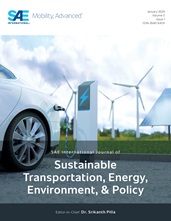Emission Control of Nitrogen Oxides—Current Status and Future Challenges
13-02-02-0008
09/07/2021
- Content
- Oxides of nitrogen (NOx) represent unwanted by-products from combustion of fossil fuels. NOx can cause significant harm to living beings through decreased air quality. This review summarizes the sources of NOx emissions, regulations established to limit these emissions from on-road transportation, and the technologies developed by the automotive industry to meet these requirements. As regulations continue to establish lower limits for NOx emissions, engine and power technologies are evolving to meet these requirements. Exhaust aftertreatment systems have enabled near-zero tailpipe NOx emissions using NOx reduction catalysts. These catalysts are being further developed for improved low-temperature performance and higher durability. Such improvements are enabled through fundamental understanding of the underlying chemistry governing these catalytic processes. Future modifications in exhaust aftertreatment system architectures and catalysts will require robust system control to optimize system performance and ensure high NOx conversion throughout useful life.
- Pages
- 33
- Citation
- Daya, R., "Emission Control of Nitrogen Oxides—Current Status and Future Challenges," SAE Int. J. Sust. Trans., Energy, Env., & Policy 2(2):121-139, 2021, https://doi.org/10.4271/13-02-02-0008.
